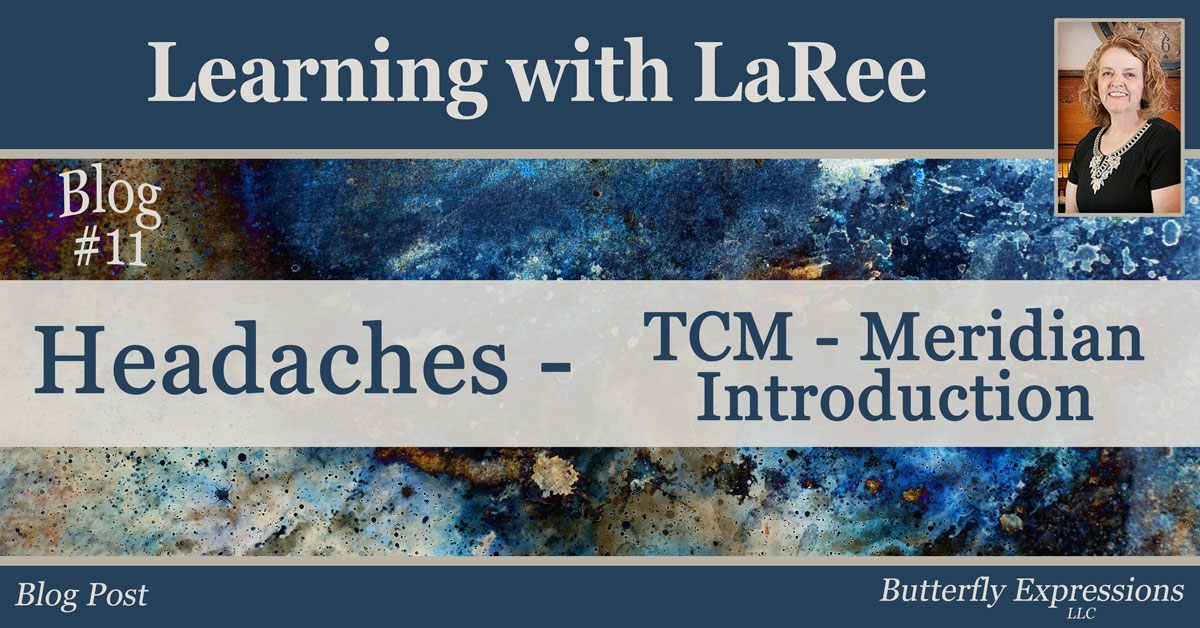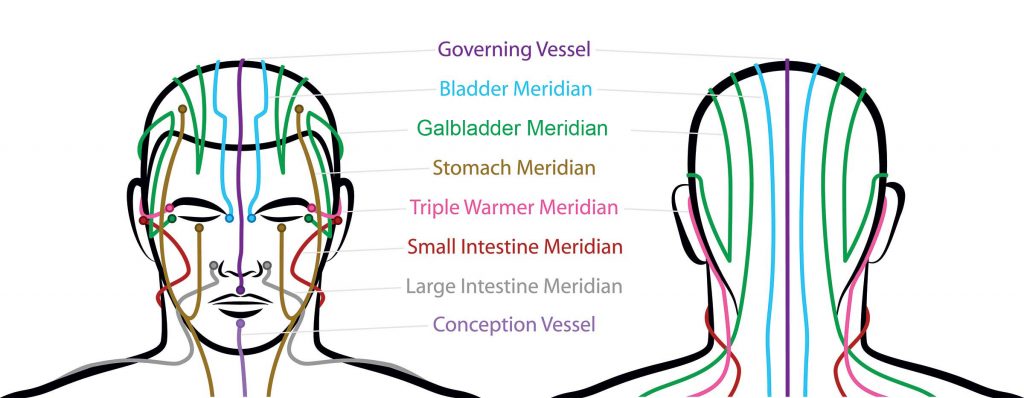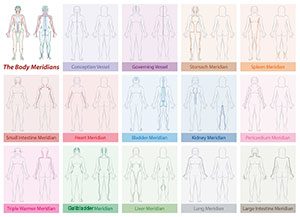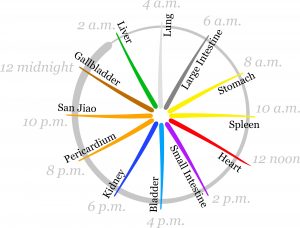#11 TCM Headaches – Meridians Intro

#11 TCM Headaches – Meridians Introduction
The Movement of Vital Energy
Meridian is the term we will use to describe one important and basic part of the overall energy distribution system of the body. I like to think of meridians as energy veins. These meridians are the pathways by which chi, or vital energy, moves through the body. Certainly, the distribution of the more ephemeral energy and the more physical blood have certain interesting similarities. Meridians are, very simply, pathways by which vital energy, Chi, moves through the body. Just as there are both veins and arteries, flowing in opposite directions, so is there a direction of flow to each of the energy meridians. Energy also flows between the meridians, directly through the cells themselves. This reminds me of the flow of blood through the tiny capillaries of the physical circulatory system.
Differing but Complimentary Modalities – East and West?
Chinese medicine concerns itself, very much, with the subtle energies of the body, rather than so much with physical structures as does Western medicine. It is not so much that one is right and the other is wrong. There is, also much good and benefit to mankind in Western surgical procedures. In a perfect world, these two differing philosophies and modalities would walk hand in hand, complementing each other. Maybe someday!
A Rose by Any Other Name?
There are various philosophies that fall under the heading “Traditional Chinese Medicine.” To add to the complexity and confusion, there are similar philosophies that are not Chinese at all! The names of these energy veins are just a little different from one school of thought to another. Other branches of Eastern thought refer to the meridians as “channels,” “elements,” or “vessels.” Meridians, however, is the term that I will use in this article.
Meridians
Traditional Chinese Medicine groups the 12 major meridians into pairs. There is also a central and governing meridian.
- Each pair has one meridian whose energy is Yin in nature and one meridian that has Yang characteristics.
- Each meridian pair represents a season and an element of the earth. (The charts below are simple illustrations of basic aspects of meridian/element theory.)
- Each meridian has organs, actually complete organ systems, associated with its unique energy patterns.
- Each meridian pair displays very distinct physical, mental and emotional characteristics – a particular personality style is one way to look at that energy. These are revered to as personal “rhythm.” For example, the Liver – both meridian and organ – when out of balance are known to be associated with the emotion of anger.
The observation of nature and human nature, over the centuries, gave rise to the lists of rhythms and their characteristics.
Our Unique Rhythm
We each have a rhythm that most closely describes us. However, our rhythm is absolutely unique to each of us individually. We each live quite strongly within one particular rhythm. However, the seasons immediately preceding and following our own on the meridian wheel influence us greatly. In addition, our own unique personality is influenced greatly by the abundance or depletion, in our own selves, of the qualities of all of the rhythms. Each meridian also has a time period throughout the 24-hour cycle where it is in an ascendant, healing phase. This is illustrated in the meridian wheel pictured below. Although we are living our lives in one particular blend of rhythms each day, we also move through all five of the seasons – many times – during the varied cycles that make up a lifetime. Both your core rhythm and the season through which you are passing profoundly influence your responses to the world. This is a very brief summary of meridians. Traditional Chinese Medical philosophy is a deep and subtle subject. I make no claim to a great understanding of its more complex pieces. It has taken me years to even begin to think in this very energy conscious and holistic fashion.
Yin and Yang
Remember, we said previously that meridians come in pairs with one half of the pair being Yin in nature and the other half being Yang. Yang energy flows upward, toward Heaven. Yin energy flows downward. Yin energy thus grounds us to the earth. It also brings what we have received from above down to earth for our practical use in our daily lives. The relationship between Yin and Yang is a relationship between opposites. When one is in the ascendancy, the other is automatically over-shadowed or weakened. Conversely, deficiency or blockage in one allows hyperactivity in the other. For example, if the flow of Yin becomes deficient or blocked in the body, Yang will become overly strong – hyperactive. Yang’s natural tendency is to flow upward. When that is the case, the overabundance of Yang energy rises into the shoulders, the neck, and on into the head. Headaches and migraines inevitably result when too much Yang energy has risen into the head. This natural result of the interplay of Yin and Yang will be important, and further illustrated, when we talk about the relationship between the liver and gallbladder to different types of headache pain.
Meridians and Headaches
A total of eight meridians run along parts of the head. At first glance, it might seem as if the other meridians have no connection to headaches. This simply is not so. As we have pointed out previously, meridians come in pairs and a problem in one half of a meridian pair always affects the other half of the pair. So, for example, since the gallbladder runs over the head, trouble in the liver – the other half of the pair – could, very possibly, be causing pain in the head. Parts of the stomach meridian are also found on the head. In a like manner to the gallbladder/liver connection, the spleen is likely to be at least part of the problem with a stomach and digestive tract-driven headache. The heart is the companion meridian to the small intestine. Physical, emotional, or energy-driven problems in the heart are very likely to manifest in the head. The placement of these meridians on the head is illustrated for you in the diagram below.


 (click to enlarge)
(click to enlarge)




















